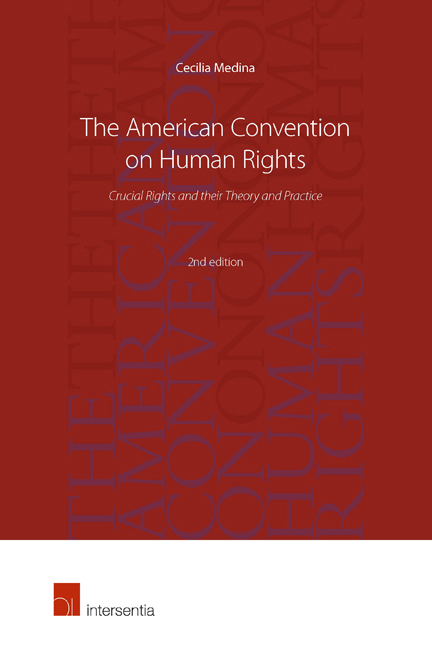Book contents
- Frontmatter
- Dedication
- Preface
- Acknowledgments
- Contents
- Table of Cases
- 1 The Court and its Circumstances
- 2 Disappearances
- 3 Right to Life
- 4 Right to Humane Treatment
- 5 Right to Personal Liberty
- 6 Right to Due Process
- 7 Principle of Legality, Freedom from Ex Post Facto Laws, and Right to Compensation for Miscarriage of Justice
- 8 Right to Judicial Protection
- Index
2 - Disappearances
Published online by Cambridge University Press: 12 December 2017
- Frontmatter
- Dedication
- Preface
- Acknowledgments
- Contents
- Table of Cases
- 1 The Court and its Circumstances
- 2 Disappearances
- 3 Right to Life
- 4 Right to Humane Treatment
- 5 Right to Personal Liberty
- 6 Right to Due Process
- 7 Principle of Legality, Freedom from Ex Post Facto Laws, and Right to Compensation for Miscarriage of Justice
- 8 Right to Judicial Protection
- Index
Summary
INTRODUCTION
A few years ago I wrote: “[i]t is evident that although human rights are universal, every region finds modalities to adjust this universality, as far as protection systems are concerned, to the nuances necessary to deal with the people, the states and the culture in which they are immersed at a given time in order to fulfil their role as comptrollers of states’ compliance with the obligations emerging from the respective treaties”. Implicit in this statement was the need to consider the political, social and economic situation in the States subject to supervision. A significant factor which influenced the nature of the nuances devised by the system was the phenomenon of disappearances in the region, a powerful weapon of the States to deal with political opposition and assert a grossly uncontrolled power over the people. The system had to address this problem, which required a new approach to what may have been envisaged when the Inter-American Commission on Human Rights (the Commission) and later the Inter-American Court of Human Rights (the Court) were created.
Disappearances are one of the worst atrocities that may afflict human beings. Their aim is to deprive a person of everything that makes life meaningful, short of killing them (although this usually happens too), and to spread terror in their direct environment, family and friends, and in society as a whole. Ultimately, it destroys the faith in institutions that constitute the essence of that which allows us to live in society. A person is deprived of his or her liberty; he or she is hidden, away from any contact with family or lawyers. Since frequently one of the aims of the exercise is to obtain information, the victim is ill-treated, usually tortured, and when this aim has been achieved or it is clear that it will not be achieved, the person is usually killed. In turn, the relatives experience, besides their loss, the desperation and impotence of not being heard by anyone, including executive authorities and the police. Moreover, they are ridiculed or even mistreated to discourage them from resorting to the legal channels that handle this type of complaint. Finally, there is no closure of the grief if the body of the disappeared person is not found and the truth is not known. The practice of this horror was frequent in the region.
- Type
- Chapter
- Information
- The American Convention on Human RightCrucial Rights and their Theory and Practice, pp. 63 - 100Publisher: IntersentiaPrint publication year: 2016
- 1
- Cited by

